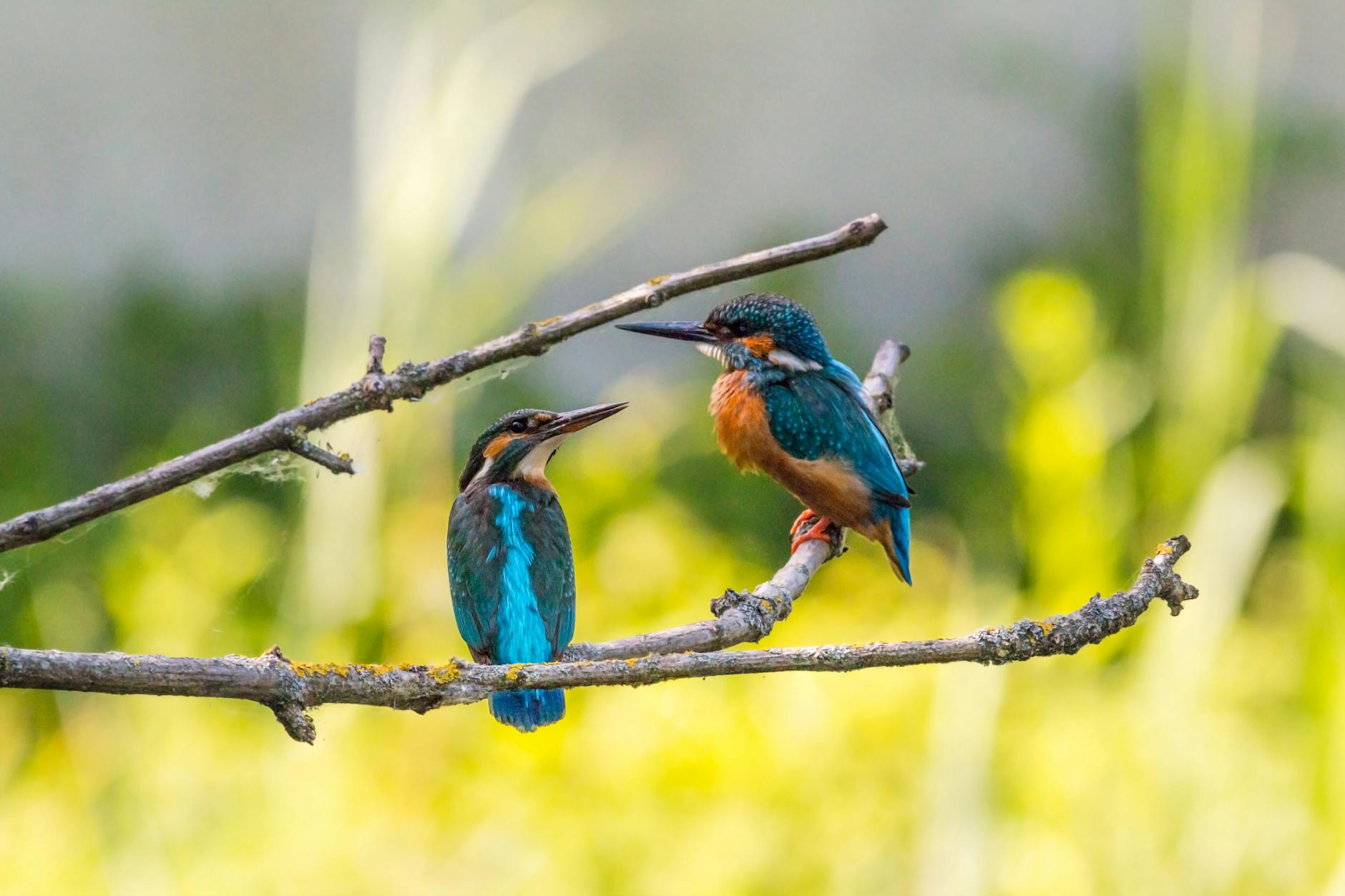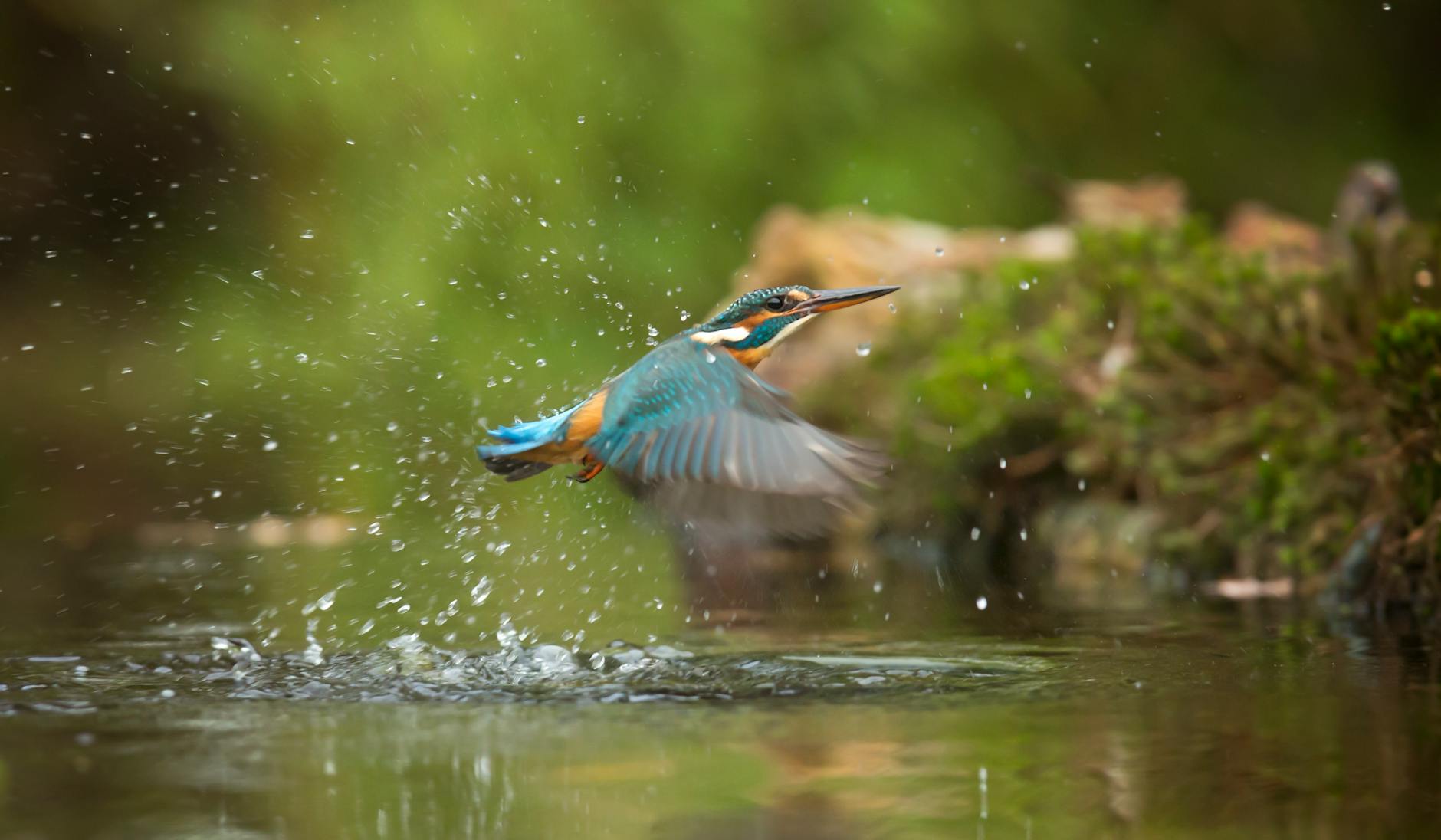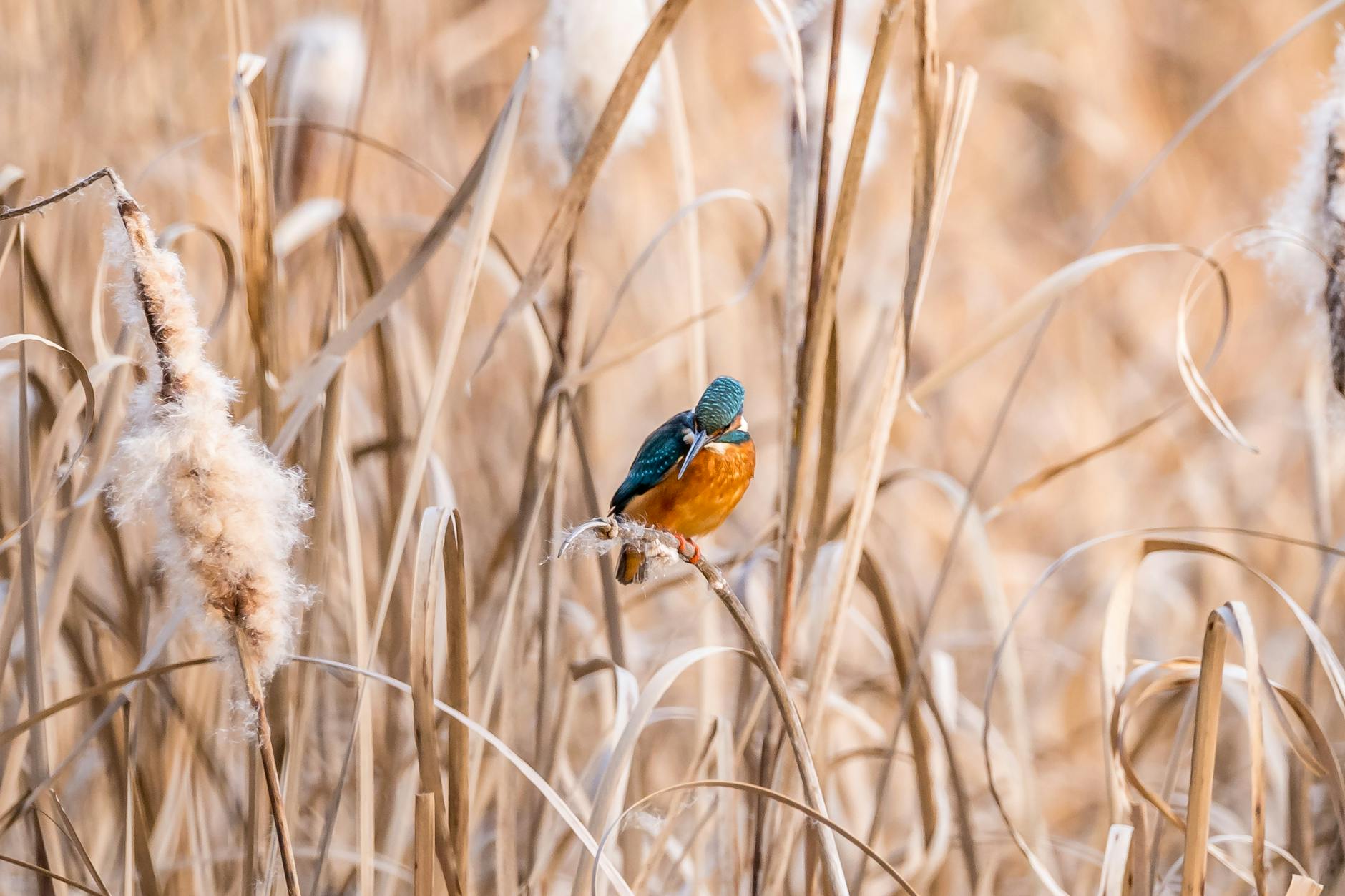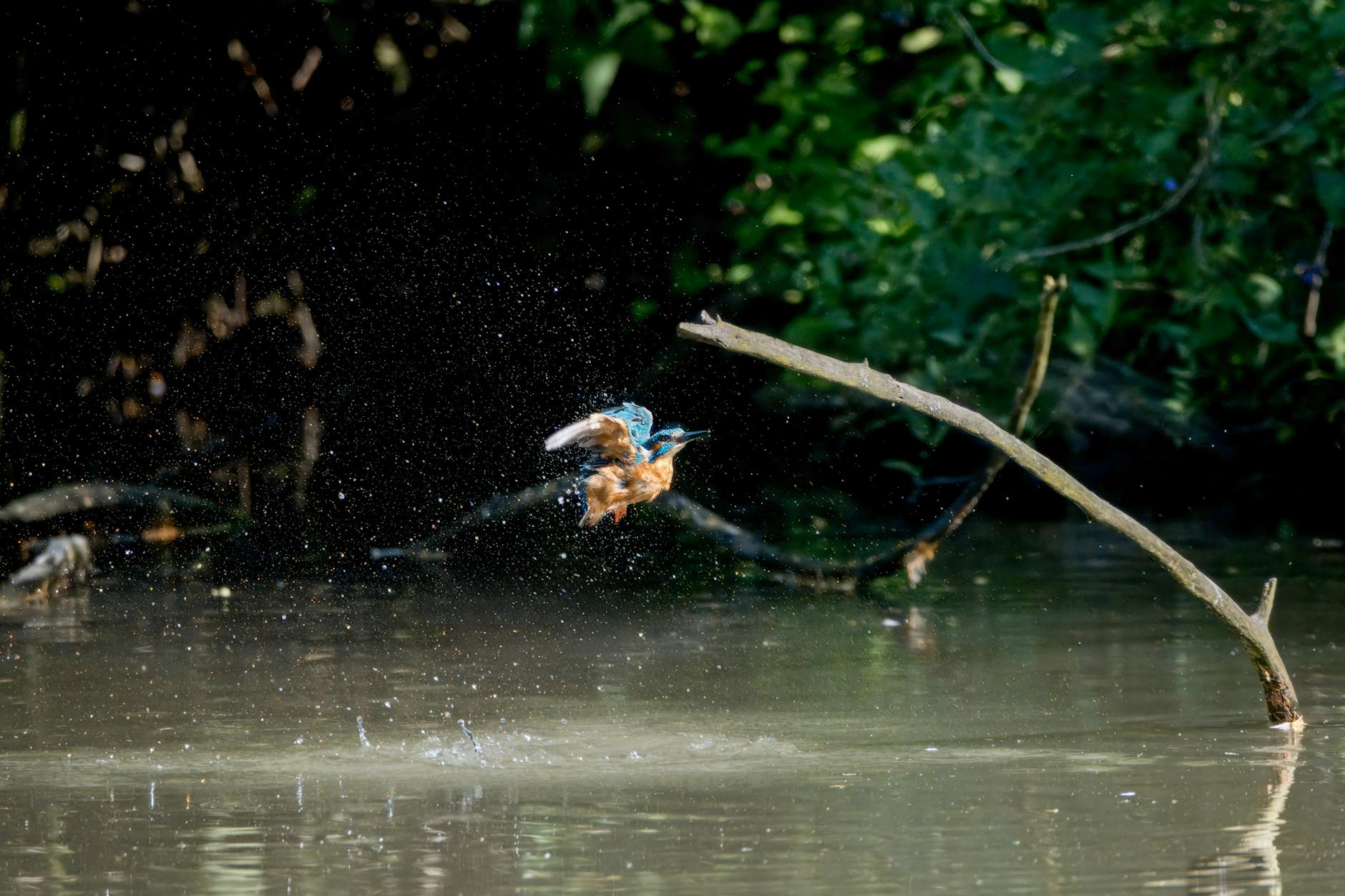Fun Kingfisher Facts for Kids: Learn About These Amazing Birds
Bright, bold, and full of character, kingfishers are some of the most eye-catching birds on the planet. These small, colourful creatures are known for their shimmering feathers, quick dives, and impressive fishing skills. Found near rivers, lakes, and coasts, they’ve captivated curious minds for centuries. Whether it’s their sharp vision or unique nesting habits, kingfishers have plenty of fascinating traits that kids will love to learn about. Let’s explore some fun facts that make this bird so extraordinary.
What Are Kingfishers?
Kingfishers are small to medium-sized birds that are known for their bright colours, sharp pointed beaks, and a knack for fishing. These birds are often found near water bodies like rivers, lakes, and coasts, making them easily recognisable by their unique features and quick, darting movements. Let’s uncover some fascinating insights about these feathery wonders.

Photo by Pixabay
Scientific Classification
Kingfishers belong to the family Alcedinidae, which is a part of the order Coraciiformes. This order also includes other birds like bee-eaters, rollers, and todies. You might think of them as a broader “bird clan” that shares some interesting traits, including their vibrant colours and specific hunting techniques.
Within the Alcedinidae family, kingfishers are grouped into various genera. These birds are further divided based on their habitat and feeding preferences. If you’re curious about how they fit into the big biological picture, you can explore more about their scientific classification for detailed insights.
Species Diversity
Did you know there are around 87 different species of kingfishers? That’s a lot of variety for one family of birds! These species are found all over the globe, except in the polar regions and some desert areas. Each species is unique, with distinct differences in size, colouring, and behaviour.
Kingfishers can generally be categorised into three types based on where they live and feed:
- River Kingfishers: Often spotted near freshwater rivers and streams.
- Tree Kingfishers: Found in wooded areas and forests.
- Water Kingfishers: Prefer coastal or marine environments.
For instance, the iconic Common Kingfisher (Alcedo atthis) stands out with its vibrant blue and orange plumage, whereas the Giant Kingfisher looks more rugged and is significantly larger. If you’re interested in learning about specific species, this comprehensive guide is a great starting point.
Kingfishers may have a wide variety of looks and lifestyles, but they all share one thing in common – they are masters of adaptation to their environments!
Physical Characteristics
Kingfishers are truly one-of-a-kind birds, celebrated for their striking features and perfectly adapted bodies. Let’s take a closer look at some of their unique physical traits that make them exceptional.
Bright Plumage
Kingfishers instantly grab attention with their dazzling feather colours. Most species showcase bright shades of blue, orange, green, and yellow, sometimes accented with white or black. These colours aren’t just for looks – the unique sheen comes from light reflecting off microscopic structures in their feathers, similar to how soap bubbles shimmer.
Some species, like the Common Kingfisher, sport a brilliant combination of electric blue backs and rich orange bellies, creating a jewel-like appearance when they dart around rivers. Others, like the Giant Kingfisher, are clad in earthy tones mixed with speckled patterns, blending neatly into their forested surroundings. Why such vivid colours? These help with camouflage when viewed from above or below, ensuring they stay under the radar of both predators and prey.

Photo by Monique Laats
Beak Shape and Size
A kingfisher’s beak is its most defining feature – long, straight, and razor-sharp. Perfectly built for fishing, this tool acts like a dagger underwater. The shape is aerodynamic, helping them reduce splashes as they dive at breakneck speeds. The beak allows them to snatch slippery fish with precision, almost like a professional angler’s rod!
Interestingly, the design of the kingfisher’s beak has inspired engineers in creating more efficient objects, such as high-speed trains. You can read more about the connection between their beak shape and functionality here.
Some kingfishers, like the Stork-billed Kingfisher, have slightly wider and larger beaks suited for catching larger prey like crabs. Each species demonstrates just how well-suited their physical features are to their diet and habitat.
Size Variations
Kingfishers are diverse not just in looks but in size too. They range from the tiny African Dwarf Kingfisher at just 10 cm long (about the size of a teacup) to the hefty Giant Kingfisher, stretching nearly 45 cm – roughly the size of a crow.
Their weight also varies significantly. Small species weigh just a few grams, like a sheet of paper, while larger ones can weigh close to half a kilogram. This wide size range is a testament to the adaptability of the kingfisher family. Whether they’re zipping through dense forests or perched along quiet shorelines, they all possess a body size perfectly matched to their environment.
For a deeper breakdown of their size differences, check out this detailed guide on kingfisher species sizes.
Habitat and Distribution
Kingfishers are birds with a deep connection to their surroundings. Whether perched on a reed or diving into serene waters, their habitats and global spread tell a fascinating story of adaptability.
Riverbanks and Lakes

Photo by Kiril Gruev
Kingfishers thrive in areas rich with water, especially along riverbanks, lakes, streams, and ponds. These spots provide two key things: a reliable food source and suitable nesting locations. Their diet mainly consists of fish, making clean freshwater habitats a perfect home for these birds. You’ll often spot them on low branches or reeds, waiting to spot unsuspecting prey in the water below.
Why do they prefer these areas? For one, the crystal-clear waters make it easier for kingfishers to hunt. Plus, bank-side vegetation offers natural cover from predators and accessible spots for burrowing nests. It’s almost like they’ve found their dream home where food and safety are always within reach!
Some species, such as the Common Kingfisher, even adapt to coastal areas or mangroves, but most stay loyal to freshwater spots. To learn more about their preferred environments, check out this habitat overview.
Global Distribution
Kingfishers enjoy a wide reach across the globe, but where you’ll find them most depends on the species. From Europe to Asia, Africa, and even parts of Oceania, these birds are truly international in their presence. However, they tend to favour tropical and subtropical regions for the abundance of water and dense vegetation.
In Europe, the Common Kingfisher (Alcedo atthis) is the stand-out species. They’re found near rivers, lakes, and streams throughout much of the continent, including the UK, Germany, and France. In Britain, they are most often seen along lowland rivers, where their vibrant plumage brings a spark of colour to the landscape. According to BirdLife International, Europe’s population of Common Kingfishers is estimated to be in the hundreds of thousands, showcasing their adaptability to environments with harsh winters.
Further afield, species like the Belted Kingfisher are commonly spotted in North America. On the other hand, the Forest Kingfisher dominates areas of northern Australia and Southeast Asia, while Africa hosts a variety of unique kingfishers such as the Pied Kingfisher, often found skimming the continent’s vast waterways. You can explore this detailed distribution guide for more information on where they live around the world.
Kingfishers might seem fragile due to their size, but their presence in both warmer climates and temperate regions proves they are masters of their chosen environments. From the tropics to temperate riverbanks, these birds adapt and flourish wherever there’s water and an abundance of prey.
Diet and Hunting Techniques
Kingfishers are admired not just for their dazzling looks but also for how they survive. Their diet and hunting techniques showcase their adaptability and skill.
Main Diet
Kingfishers primarily feast on fresh, high-protein food sources. Their menu often includes:
- Small fish, including minnows and sticklebacks.
- Insects, such as grasshoppers and dragonflies.
- Crustaceans, including small crabs and shrimps.
Their food choices depend on their habitat. Close to rivers, they’ll stick to fish, while inland species may favour insects. In any case, kingfishers need to eat a lot relative to their size – some consume up to half their body weight daily to keep their energy up! You can learn more about their eating habits here.
Hunting Strategies
Kingfishers are master hunters. They rely on patience, precision, and lightning speed to catch their prey. Here’s how they do it:
- Spotting the Prey: A kingfisher perches on a branch or reed near the water, scanning for movement below. Their incredible eyesight allows them to detect even the swiftest ripple.
- Perfecting the Dive: Once they spot a target, they dive head-first into the water, beak straight like an arrow. This reduces splash and maximises precision, giving them the edge over slippery prey. Check out this guide to learn more about this fascinating technique.
- Using Their Beak: The sharp, sturdy beak acts like tweezers, gripping hold of fish or insects with ease.
- Preparing the Catch: After catching the fish, they often return to their perch to skillfully hit the catch against a branch. This stuns or kills the prey, making it easier to swallow whole.
Some species, like the Pied Kingfisher, add another trick to their repertoire. They hover over water momentarily before diving – a skill not all kingfishers share! If you’re curious about their techniques, this article explains their strategy in detail.

Photo by Siegfried Poepperl
Their stealthy, calculated approach makes them some of the most effective hunters in the bird kingdom, capable of catching prey with remarkable speed and accuracy.
Interesting Facts About Kingfishers
Kingfishers are fascinating birds that have captured the imaginations of people around the world with their bright colours, unique behaviour, and impressive skills. From their clever adaptations to their cultural importance, these birds are full of surprises. Let’s take a closer look at some standout facts about kingfishers.
Adaptations for Survival
Kingfishers are like mini marvels of engineering, designed for hunting and thriving in their habitats. One of their most impressive adaptations is their outstanding eyesight. These birds can see incredibly well both on land and underwater, thanks to a special membrane that protects their eyes when they dive. This feature works like a pair of built-in goggles, helping them spot and catch fish with pinpoint precision. Read more about how their vision supports them in hunting here.
Another clever adaptation is their perfectly shaped beak. The long, sharp structure slices through water effortlessly, reducing splash and ensuring their dives are efficient. Inspired by this streamlined design, engineers used the kingfisher’s beak as a model for designing quieter and faster Japanese bullet trains. Talk about being a bird of influence! Explore this design connection here.
Kingfishers also have powerful wings and short necks. This combination allows for quick movements and stability when flying or perching. Their small size makes them agile hunters, able to dart after prey with impressive speed.
Cultural Significance
The kingfisher isn’t just admired for its looks and skills; it also holds deep cultural significance across many societies. For instance, in Native American mythology, the kingfisher symbolises prosperity and peace. Some tribes believe it brings good luck and abundance to those who see it. Other cultures, like those in Europe, associate the bird with calmness and serenity, often referring to peaceful weather as “halcyon days,” a term linked to Greek mythology about kingfishers. Learn more about these rich cultural connections here.
Interestingly, the kingfisher has even made its mark on modern designs and technology. As mentioned earlier, the Shinkansen bullet train was inspired by the bird’s beak. This isn’t just a fun fact—it’s a reminder that nature often provides innovative ideas for human challenges. How cool is that?
Behavioural Traits
Kingfishers are known for their interesting behaviours, especially when it comes to social habits and nesting. They are generally solitary birds outside of the breeding season, fiercely defending their territory from other kingfishers.
During nesting time, they become expert builders. Kingfishers dig burrows in riverbanks, creating long tunnels that protect their eggs. These tunnels can stretch up to 140 cm, ending in a cosy nesting chamber. Both the male and female work together to excavate the burrow—a family effort! Want to know more about their nesting habits? Check out this detailed guide on kingfisher nests.
When it comes to courtship, male kingfishers impress potential mates with gifts of food, such as small fish. This isn’t just a nice gesture—it’s a way to show their hunting prowess and their ability to provide for a family. Observing their courtship behaviour is like watching a carefully choreographed dance.
Kingfishers are a testament to how birds can inspire awe through their adaptations, symbolism, and unique ways of interacting with the world. Stay tuned for even more intriguing facts about these amazing creatures!
Conclusion
Kingfishers are more than just beautiful birds—they’re a vivid reminder of nature’s brilliance. With their bright feathers, swift hunting skills, and global presence, they inspire awe and curiosity in both kids and adults alike.
These fascinating creatures connect us to rivers, forests, and coasts, showcasing how adaptable wildlife can be. Their role in ecosystems highlights the importance of conserving natural habitats for generations to come.
Challenge yourself to spot a kingfisher in the wild or learn more about their unique traits. Share your discoveries, and let these incredible birds spark a new appreciation for the wonders of nature.










